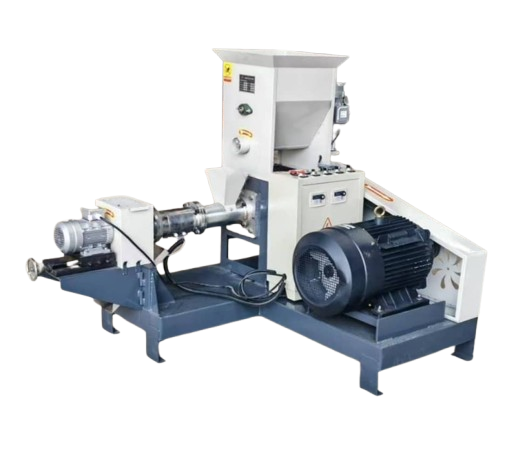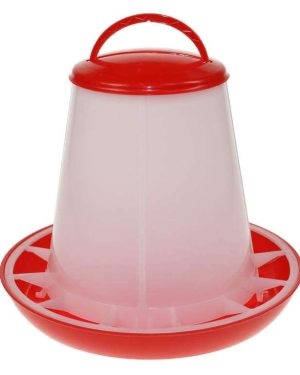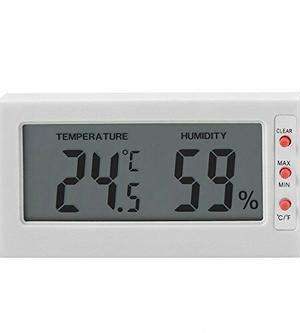Description
The Floating Fish Feed Extruder | 100kg/hr is a specialized machine used to produce high-quality floating fish feed pellets for fish farming. It is designed for small to medium-scale aquaculture businesses, ensuring efficient feed production with optimal nutritional value. The machine processes various raw materials, such as soybean meal, corn, fish meal, and wheat bran, into floating feed pellets that improve fish growth and reduce feed waste.
Key Features of Floating Fish Feed Extruder | 100kg/hr:
- Production Capacity: 100kg/hr (ideal for small to medium fish farms)
- Floating Feed Technology: Produces buoyant, water-stable pellets to reduce waste
- Efficient Extrusion System: Ensures proper cooking of ingredients for better digestibility
- Adjustable Pellet Size: Can produce feed pellets of different sizes (1mm – 10mm) for various fish species
- Durable Build: Made from high-quality stainless steel for longevity and corrosion resistance
- Energy Efficient: Uses either an electric motor or diesel engine for flexibility in different environments
- Automatic Cutting Mechanism: Ensures uniform pellet sizes
- Easy Operation & Maintenance: Designed for user-friendly handling and cleaning
Explanation of How Floating Fish Feed Extruder | 100kg/hr Works:
1. Raw Material Processing & Feeding
-
The user loads a mixture of grains, protein sources (fish meal, soybean meal), vitamins, and binders into the hopper.
2. Extrusion & Cooking Process
-
Inside the chamber, the raw materials are subjected to high temperature (80–120°C) and pressure.
-
A rotating screw mechanism compresses and cooks the feed, breaking down starch and enhancing digestibility.
-
The heat and pressure also ensure that the feed pellets float on water.
3. Pellet Formation & Cutting
-
The cooked feed is forced through a die, shaping it into cylindrical pellets.
-
An automatic cutter trims the pellets into desired sizes, making them suitable for different fish species.
4. Cooling & Drying
-
Freshly extruded pellets are hot and moist, requiring cooling to harden and maintain shape.
-
The pellets are either air-dried or sun-dried to reduce moisture content, preventing spoilage.
Benefits of Using the Floating Fish Feed Extruder (100kg/hr)
- Enhances Fish Growth: Produces nutrient-rich, easily digestible feed.
- Reduces Feed Waste: Floating feed prevents sinking and water pollution.
- Saves Cost: Allows farmers to produce custom, cost-effective feed instead of buying commercial pellets.
- Versatile & Flexible: Can produce feed for tilapia, catfish, carp, and shrimp.
- Improves Water Quality: Floating feed prevents water contamination from uneaten food.
Ideal Applications:
- Small & Medium-Scale Fish Farms – Suitable for farmers raising tilapia, catfish, carp, and ornamental fish.
- Aquaculture Feed Processing Units – Small businesses producing fish feed for local farms.
- Research & Development Centers – Useful for feed trials in aquaculture research.
Installation & Operation Guide
1️⃣ Set up the machine on a stable, dry surface with proper ventilation.
2️⃣ Connect to power (either electric or diesel engine, depending on the model).
3️⃣ Load raw materials (ground maize, fish meal, soybean meal, vitamins, etc.) into the hopper.
4️⃣ Start the machine and adjust settings (temperature, pellet size, and cutting speed).
5️⃣ Monitor extrusion and collect pellets for cooling and drying.
6️⃣ Store feed properly in a dry, cool place to maintain quality.
Why Choose This Floating Fish Feed Extruder?
- Compact & Efficient Design – Perfect for small to medium production.
- Floating Feed Production – Reduces waste and enhances fish feeding efficiency.
- Customizable Pellet Sizes – Suitable for fish at different growth stages.
- Cost-Effective & Durable – Saves money on commercial feed while ensuring long-lasting performance.
Additional information
| Weight | 500 kg |
|---|







Reviews
There are no reviews yet